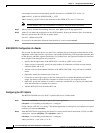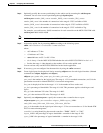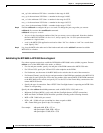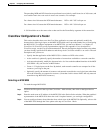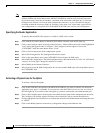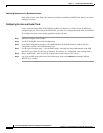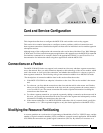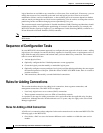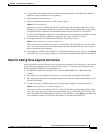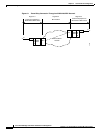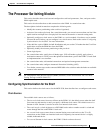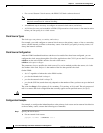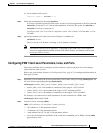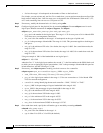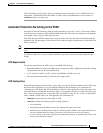
6-2
Cisco MGX 8230 Edge Concentrator Installation and Configuration
Release 1.1.31, Part Number 78-11215-03 Rev. B0, May 2001
Chapter 6 Card and Service Configuration
Sequence of Configuration Tasks
logical interface are available to any controller on a first-come, first-served basis. If necessary, you can
modify the resources for a controller at the card level and logical port level. Port-level resource
modification follows card-level modification, so the available port-level resources depend on whether
and how much you change the card-level resource partitioning. You do not have to change the resource
partitioning for the card before changing resource partitioning for a port.
The current network control application is Portable AutoRoute (PAR). Planning considerations should
include the possibility of modifying the partitioning of resources for the interface. For example, the
MGX 8230 has the capacity to support a Cisco Multiprotocol Label Switching (MPLS) controller or a
Private Network to Network Interface (PNNI) controller.
Note There is no need to partition MGX 8230 service module resources in this release of the MGX 8230
BPX feeder.
Sequence of Configuration Tasks
In a new MGX 8230, the common approach is to configure the same aspect for all cards at once—adding
logical ports, for example. In contrast, the likely sequence for installing a new or replacement card is to
begin with the card-level features and continue until you have added every connection. The common
tasks for a new MGX 8230 are:
1. Activate physical lines.
2. Optionally configure the line if default parameters are not appropriate.
3. Create the logical ports then modify as needed the logical ports.
4. Optionally configure resource partitions for a logical port if the default partitioning does not support
the intended operation of the port. (With this release of MGX 8230 BPX feeder, there is no need to
partition resources.)
5. Add connections, then modify as needed individual connections.
Rules for Adding Connections
This section describes the rules for adding local connections, three-segment connections, and
management connections. The MGX 8230 can support
• Local-only, digital access cross-connect (DAX) connections
• Three-segment connections across an ATM or Frame Relay network
As a preface to the steps for adding connections, this section describes the applicable rules for these
connections. Although the rules include references to CLI syntax, they also apply to the Cisco WAN
Manager application.
Rules for Adding a DAX Connection
A DAX con is a connection whose endpoints for the entire connection exist on the same MGX 8230. The
following apply to the MGX 8230:
1. On a feeder, a DAX con can exist between different service modules or within the same service
module.



